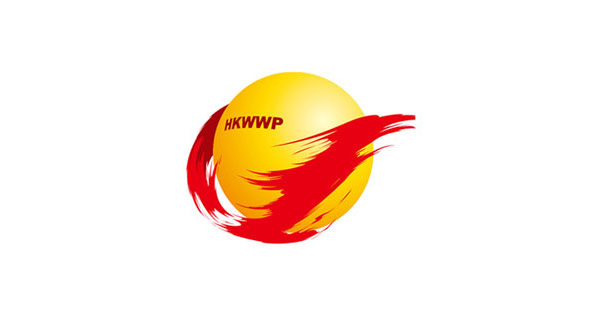 ■美國達美航空在空中釋放燃料,燃油造成地面學校多人不適。 資料圖片
■美國達美航空在空中釋放燃料,燃油造成地面學校多人不適。 資料圖片【原文】下文摘錄自香港《文匯報》1月16日報道:
美國達美航空(Delta Airlines)一架波音777客機(Boeing 777)在洛杉磯國際機場(Los Angeles International Airport)起飛後不久,因引擎故障需折返急降,其間在空中釋放燃料(fuel),最終安全降落。不過,排出的燃料卻灑落在機場附近15間學校,合共61名學生和成人感到不適,包括出現皮膚刺痛(irritation)和輕微呼吸困難。聯邦航空管理局(Federal Aviation Administration)正調查事件,以了解機師是否按照指定程序放油。
肇事的達美航空編號DL89航班載有181名乘客和機組人員,在當地時間上午11時30分於洛杉磯出發,原定前往中國上海(Shanghai),客機起飛數分鐘後,機師向航空交通管制中心表示,客機右邊引擎壓縮器失速(compressor stall),需緊急折返洛杉磯國際機場。客機其後在空中釋放燃料,以達至安全降落重量。
當時客機在海洋上空,航管人員(air traffic controller)曾詢問機師會否保持在海上飛行並釋出燃料,但機師拒絕。追蹤航機飛行路線的FlightAware網站顯示,客機在海面上空突然右轉飛向陸地,在洛杉磯上空繞了一圈,再由東面飛返機場。
洛杉磯縣消防部門(LA County Fire Department)表示,客機在機場以東約21公里的卡德希(Kadesh)及周邊地區排出燃料,同時飛行高度逐漸下降至約700米,燃料灑落多間學校範圍,最少15間學校受影響,其中公園大道小學(Park Avenue Elementary)當時有一批學生在操場上體育課,燃料落下時恍如蒸氣,現場瀰漫一片濃烈難聞的燃油味,不少學生感到皮膚灼熱刺痛,亦有多名教師感到頭痛,校內共有17名學童和9名成人不適。70名消防員接報後趕赴現場治理,其他學生則掩住口鼻從學校疏散。
達美航空發聲明(statement)表示,肇事客機按照正常程序釋放燃料,以達到安全降落的重量,最終成功降落,聲明未有說明客機引擎故障原因及共釋出多少燃料。
FAA指出,當局正全面調查事件,稱客機進出美國大型機場時若需放油,需依照特定程序,在指定人煙稀少(unpopulated)地區上空排放燃料,一般要在較高的高度進行,令燃料能在空中霧化(atomize)及消散(disperse),避免落到地面。
今次涉事機師明顯未有遵照當局的規定,但退休機長莫斯(Doug Moss)表示,機師在緊急情況下可無需緊跟規定,假如客機需留在海上半小時至一小時傾倒燃料,但同時遇上壓縮器失速,引擎扇葉可能脫落並割斷油管,隨時引起大火,機師便需決定留在海洋上空排出燃料,抑或盡早折返降落。
莫斯認為,今次機師為顧及機上乘客和機員安全而作出緊急決定,未有疏忽職守,但其間有人被釋出的燃料影響,實屬不幸。
Delta aircraft dumped fuel over 15 American schools
【譯文】A U.S. Delta Airlines Boeing 777 experienced an engine issue shortly after taking off at the Los Angeles International Airport, and returned and finally landed safely after a release of jet fuel. However, the fuel was dropped onto 15 schools in close proximity to the airport, causing skin irritation and breathing problems to over 61 students and adults. The Federal Aviation Administration (FAA) was investigating the incident to see if the pilot had acted in accordance with the specific fuel-dumping procedures.
The involved flight DL89, with 181 passengers and crew on board, had taken off from Los Angeles at 11:30 a.m. and was bound for Shanghai, China. Only minutes after the departure, the pilot reported to the air traffic controller a compressor stall in the right engine so that the plane had to turn back to the Los Angeles International Airport. Then, the plane dumped fuel to achieve a weight for safe landing.
When the plane was over the ocean, the air traffic controller asked if the pilot would keep flying at sea and release fuel, but the pilot refused to do so. The flight tracking website FlightAware showed that the plane suddenly turned right over the sea to the land, then circled back over Los Angeles and returned to the airport from the east.
The LA County Fire Department said that the plane dumped fuel in Kadesh and the surrounding area about 21 kilometers east of the airport at a low altitude of around 700 meters, with the fuel spilling out over at least 15 schools. By the time the fuel descended like mist, a group of students at the Park Avenue Elementary were having physical education class, and the air was filled with pungent odor shortly afterwards.
Several students complained that their skin was itching and some teachers had headaches from the smell, with a total of 17 children and 9 adults feeling unwell. 70 firefighters arrived immediately and committed to providing care on-scene for those injured, and other students evacuated from the school with their noses covered.
Delta said in a statement that the aircraft landed safely after a release of fuel, which was required as part of normal procedure to reach a safe landing weight, but the cause of the engine failure and amount of fuel released were not mentioned. FAA said that it was thoroughly investigating the circumstances behind the incident, adding that there were special procedures for aircraft operating into and out of any major US airport. It was stipulated that the fuel should be dumped over designated unpopulated areas, typically at higher altitudes so that the fuel would be able to atomize and disperse before it reached the ground.
It was obvious that pilot failed to comply with the relevant regulations. However, "pilots can deviate from the rules in an emergency", said Doug Moss, a retired airline captain. He said it could have taken a half-hour up to an hour for a pilot to stay over the ocean to dump the fuel. If it happened that there was a compressor stall, the fan blades might have separated and cut into the fuel lines, leading to an uncontrollable fire, so that the pilot would have to decide whether to stay over the ocean to dump the fuel or return for a landing as soon as possible. Moss believed that the pilot had taken an action in the best interests of the public safety, and it involved no dereliction of duty, but it was only unfortunate that some people were adversely affected by the fuel-dumping.■龐嘉儀
Q&A
1. 飛機放油的最低高度限制約為多少米?
2. 放油的地域規定除海洋外,還有哪些地方?
3. 航空業每年平均在地球大氣中排放出多少航空煤油?
4. 聯邦航空管理局隸屬於美國哪個部門?
5. 承上題,該局總部設於哪裡?
Answer
1. 3,000米
2. 山區、荒原、沙漠等
3. 數百萬噸
4. 美國運輸部(U.S. Department of Transportation)
5. 華盛頓(Washington, D.C.)

